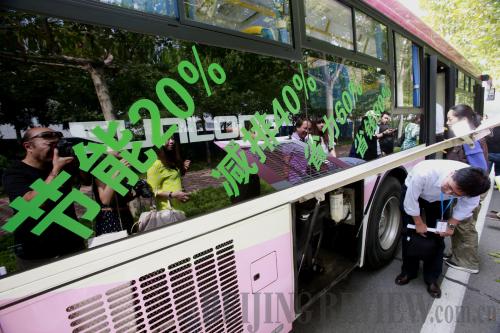|
 |
|
GREEN BUS: An aerodynamic energy-saving bus is on display in Tianjin on September 14, attracting a lot lof attention from passers-by (LI MINGFANG) |
Infrastructure Boost
The State Council issued a guideline to improve urban infrastructure on September 16.
As one guiding rule, underground construction should come before construction above ground.
Besides government input, non-government capital will be encouraged to partly join construction or management of the projects so as to improve the ecological environment and safety of cities.
The guideline specifies key tasks to upgrade urban infrastructure.
One is to improve construction and renovation of underground pipe networks, including pipes for water, sewage, rain, gas, heat and communication.
By 2015, 73,000 km of sewage pipes should be added, and 80,000 km of old urban gas and 92,800 km of old urban heat piping should be renovated.
Another aim is to boost infrastructure for urban sewer works and flood-fighting. A relatively complete system on drainage and flood-fighting should be built in about 10 years.
To boost urban transport, China will add 1,000 km subway tracks across the country by 2015.
Joint R&D Center
A European research and development center jointly built by Swedish carmaker Volvo and its Chinese owner, Geely Holding Group, began trial operations on September 13, according to Geely.
The center, based in Gothenburg, Sweden, will develop a new modular architecture and components for future C-segment cars, addressing the needs of both Volvo and Geely.
The center will allow Geely to improve its product quality and functions, while Volvo can tap into Geely's supply network in Asia, according to An Conghui, CEO and President of Geely Holing Group.
Currently, about 70 engineers have started work in the center. It is expected to employ about 200 engineers in the last half of 2014.
The joint research center will see Geely focus on medium and low-cost cars, while Volvo focuses on the luxury car market. | 